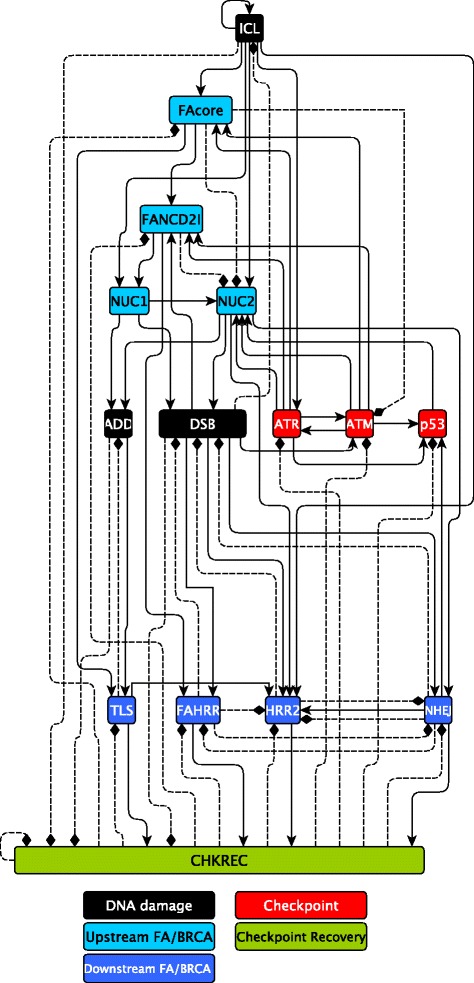Fig. 1.

The latest FA/BRCA network. In response to an ICL, the FA/BRCA network responds by blocking the cell cycle through the ATR and ATM checkpoint kinases and their downstream target p53. Similarly, the FA core complex (FAcore) becomes activated and ubiquitinates FANCD2I complex, which in turn recruits DNA endonucleases (NUC1 and NUC2). These endonucleases unhook the ICL generating a DNA adduct (ADD) and a double strand break (DSB). Translesion synythesis (TLS) takes over the ADD while the DSB can be rejoined either by FA/BRCA-dependent Homologous Recombination (FAHRR), FA/BRCA-independent Homologous Recombination (HRR2), or by the error prone Non-Homologous End-Joining (NHEJ) pathways. Finally, we predict that the CHKREC node, composed by the G2/M transcriptional program and checkpoint recovery proteins, turns off the checkpoint and DNA repair proteins. Rectangles represent proteins or protein complexes, pointed arrows are positive regulatory interactions, and dashed lines with blunt arrows are negative regulatory interactions. Readers may refer to [38] for a more detailed description of the FA/BRCA pathway
